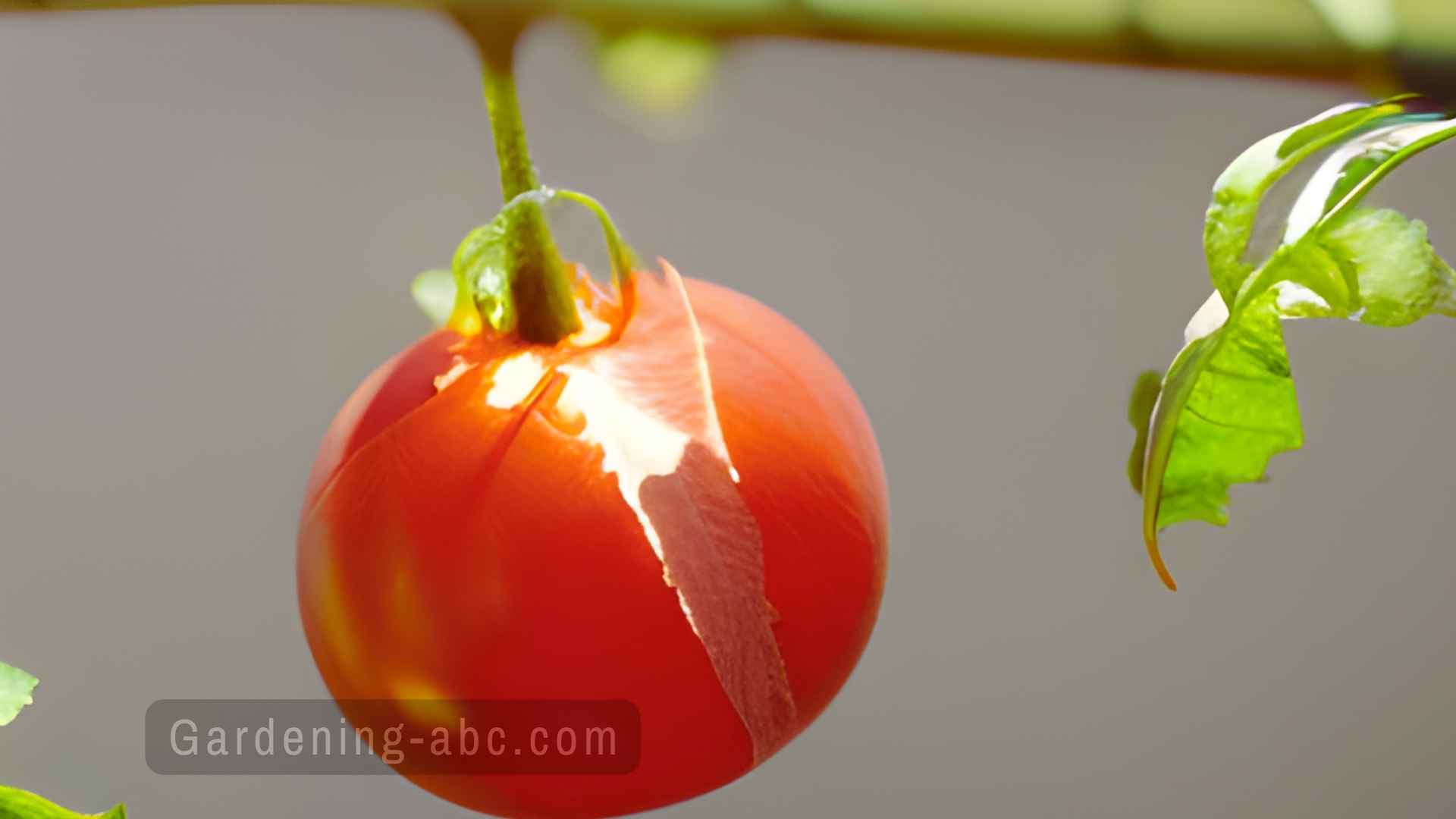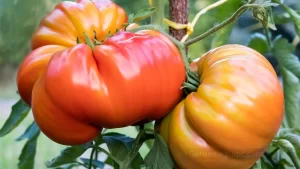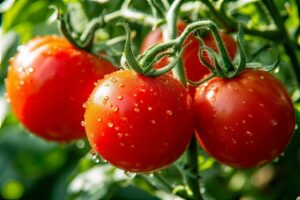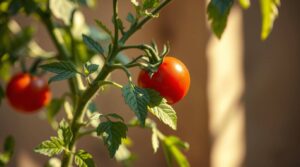We use affiliate links to run our site. When you buy through links on our site, we may earn an affiliate commission, without any added cost to you. Learn more
Tomatoes are one of the most popular vegetables grown in home gardens, and for a good reason. They are versatile, delicious, and packed with nutrients. However, nothing is more frustrating than discovering that your beautiful, ripe tomatoes have split open.
If you have experienced this, you are not alone. Splitting tomatoes can be caused by a variety of factors, some of which are preventable.
In this article, we will explore why your tomatoes are splitting and what you can do to prevent it from happening again.
Why Do Tomatoes Split on The Vine?
Tomatoes split when they experience uneven water distribution, which causes the fruit to expand faster than the skin can stretch.
This is more likely to happen during periods of heavy rainfall, irrigation, or drought. When the water supply is suddenly increased, the tomato absorbs too much water, which leads to the fruit splitting.
Tomato splitting is also more common in older fruit, which has thinner skin that is less able to handle water fluctuations.
- Feeds fruits and vegetables: Miracle-Gro Shake ‘N Feed Tomato, Fruit &…
- Strengthens plant walls: This plant food contains calcium to help form…
- Natural Ingredients feed soil microbes: kelp, earthworm castings, feather…
- Application: Apply this slow-release fertilizer evenly onto the soil and…
- Ongoing care: Reapply Miracle-Gro Shake ‘N Feed Tomato, Fruit & Vegetable…
Types of Cracking:
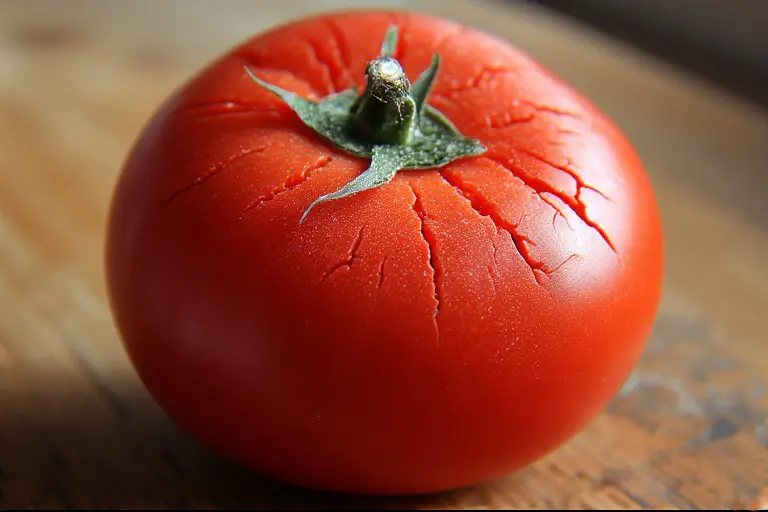

There are two main types of tomato cracking: radial cracking and concentric cracking.
Radial cracking occurs when the cracks start from the stem and move outwards towards the fruit’s blossom end. Concentric cracking, on the other hand, occurs in a circular pattern around the fruit’s stem.
8 Reasons For Cracking and Splitting
Several factors can cause tomatoes to crack or split. Some of the most common causes include:


1. Inconsistent Watering:
Inconsistent watering can also cause tomatoes to split. If you let the soil dry out completely and then water the plant heavily, the sudden change in water availability can cause the fruit to expand too quickly, resulting in splitting.
2. Overwatering:
Overwatering your tomato plants can cause the fruits to swell and eventually split open. When the soil around the plant becomes saturated with water, it puts pressure on the tomato, causing it to expand rapidly.
3. Hot Weather:
High temperatures can cause tomatoes to ripen too quickly, leading to splitting. This is because hot weather causes the plant to take up water faster than it can be transported to the fruit.
4. Calcium Deficiency:
Calcium deficiency in the soil can also cause tomato cracking, as calcium is essential for strong cell walls in the fruit.
5. Poorly Drained Soil:
Tomatoes grown in poorly drained soil are more likely to split, as excess water cannot drain away and causes the fruit to absorb too much water.
6. Over-Ripening:
Over-ripening of the fruit can also lead to cracking, as the fruit becomes too soft and cannot handle the weight of the water.
7. Varietal Selection:
Some tomato varieties are more prone to splitting than others. If you consistently have issues with splitting, it may be worth trying a different variety to see if it makes a difference.
8. Exposed Fruit:
Fruit that is not protected by the leaves of the plant is more likely to split, as it is exposed to direct sunlight and rapid changes in temperature.
- IDEAL GARDEN BASKET: Basket made of durable,…
- INNOVATIVE DESIGN: Colander side has drain holes…
- LONG-LASTING AND RELIABLE: Crafted with a durable,…
How to Prevent Tomatoes from Splitting:
Now that you know some of the common causes of splitting tomatoes, let’s look at some things you can do to prevent it from happening in the first place.


Water Consistently
One of the most important things you can do to prevent splitting is to water your tomato plants consistently. Make sure the soil stays evenly moist, but not saturated. Avoid letting the soil dry out completely and then watering heavily.
Mulch
Mulching around your tomato plants can help to regulate soil moisture and temperature. It can also help to prevent water from evaporating too quickly from the soil, which can lead to inconsistent watering.
Provide Shade:
If you live in an area with hot summers, providing shade for your tomato plants can help to slow down the ripening process and prevent splitting. You can use a good quality shade cloth like this or simply plant your tomatoes in a spot that gets partial shade during the hottest part of the day.
Choose the Right Variety
If you consistently have issues with splitting tomatoes, try planting a different variety that is less prone to splitting. Look for varieties that have thicker skins or are bred specifically for hot climates.
What To Do With Already Split Tomatoes:
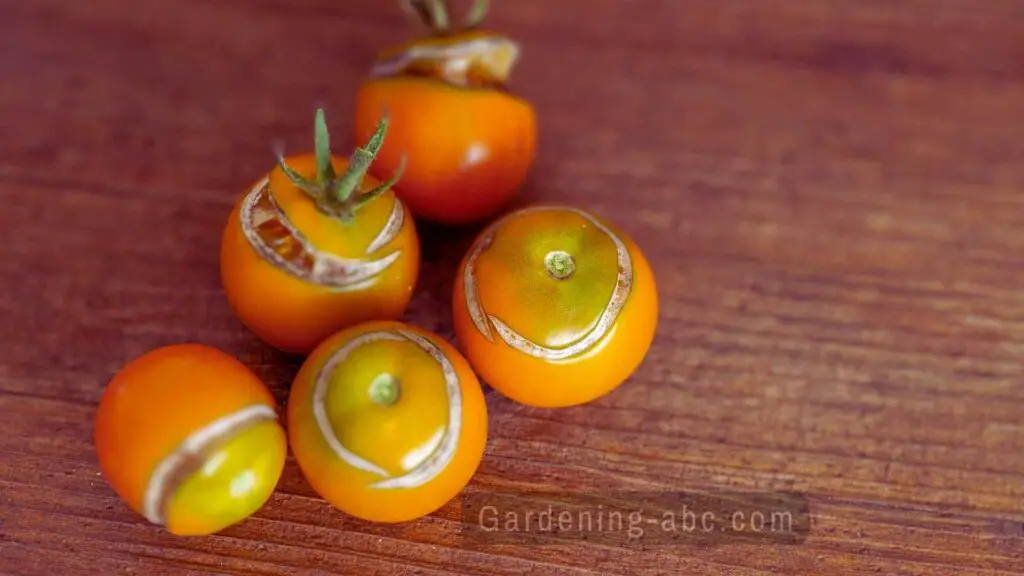

If you have already discovered split tomatoes on your plants, there are a few things you can do to salvage them
Harvest Quickly:
As soon as you notice a split tomato, it’s essential to harvest it as soon as possible. The longer it remains on the vine, the higher the chance of rot and insect damage. Plus, the split makes it more attractive to insects and pests.
Consume:
After harvesting the split tomatoes, inspect them thoroughly for any signs of insects or rot. Discard any fruit that smells sour or has an oozing appearance. If the fruit looks and smells fine, then it’s still perfectly edible.
Split tomatoes don’t store well, so it’s best to eat or cook them immediately. Try making some fresh tomato sauce, salsa, or a salad. You can even freeze them for future use.
Prevent Future Splitting:
To prevent future tomato splitting, make sure to maintain even watering and avoid over-fertilizing. Ensure that your tomato plants have adequate support from cages or stakes to prevent the weight of the fruit from causing splitting.
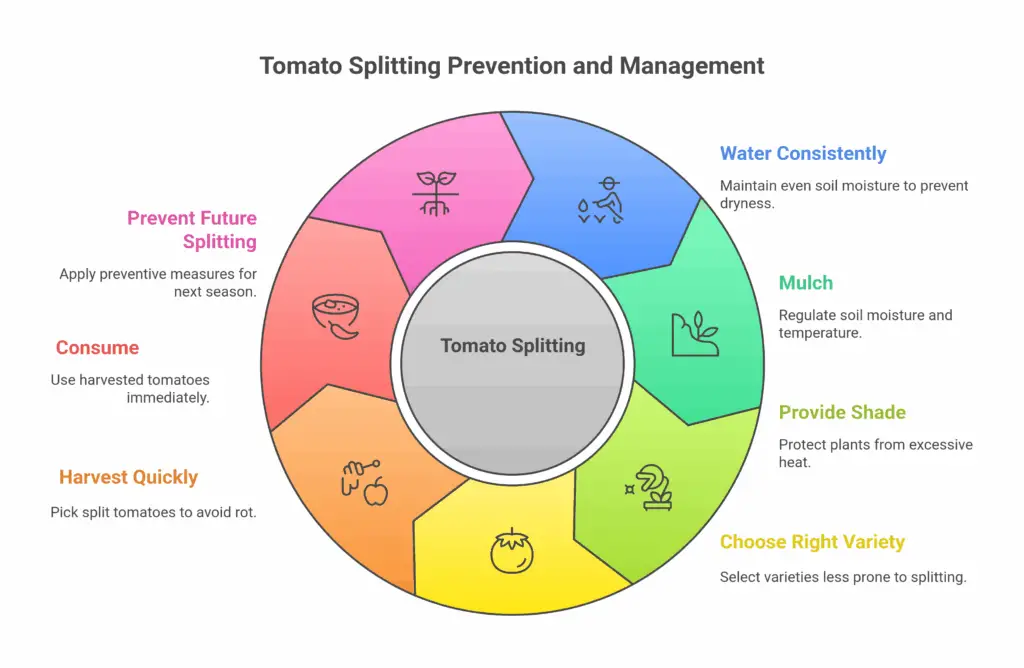

Final Thoughts:
The problem of split tomatoes can be frustrating, but it is not insurmountable. By understanding the root causes of splitting and implementing the preventative measures we’ve discussed in this article, you can significantly reduce the risk of experiencing this issue in your tomato garden. Remember always to keep an eye on your plants and provide them with the care they need.
If you found this article helpful, please consider sharing it with other tomato lovers who might be struggling with the same issue. And don’t forget to explore more articles on this site for other helpful tips and advice on gardening and plant care.
Now it’s time to take action! Armed with the knowledge and solutions provided in this article, go out there and put them into practice. Your tomatoes will thank you, and you’ll be able to enjoy the sweet, juicy fruit of your labor without any splits or cracks.
Amazon and the Amazon logo are trademarks of Amazon.com, Inc, or its affiliates.


Hi there! My name is Prasenjit and I’m an avid gardener and someone who has grown a passion for growing plants. From my hands-on experience, I have learned what works and what doesn’t. Here I share everything I have learned.
